|
Home
Up
Paintball Guns
Military Simulation,
BT Paintball,
Tippmann,
RAM4,
Mars LT,
Zeus G2,
Miltec,
War Sensor,
Splatmatic,
Auto- Ordnance,
Paintball Pistols,
Paintball Accessories,
WWII Helmets,
Paintballs
Airsoft Guns
WWII Airsoft
Guns, Classic Army,
KSC,
Maruzen,
Western Arms ,
Airsoft Minis,
Spring Guns,
Olympic Arms,
Chinese AEG's
Pellet Guns
.177 & 22 Calibers & Accessories
Action figures
Soldiers Story,
DID Figures
Dragon,
GI Joe,
Bluebox Toys,
Sideshow Toys,
Marx Toys, In
the Past Toys
Tactical Gear
Ghillie Suits & Camo, CQB
Solutions, Mil-Force,
Hydrastorm,
Hellstorm,
Holsters,
Goggles, Wiley-X Eyeware,
Leapers
Swords & Knives
Fantasy & Military reproduction swords,
daggers &
knives
Rifle Scopes & Accessories
Rifle Parts &
Mounts, Zos Rifle Scopes, Gun Cases,
Scope Rings, Spotting Scopes
Surplus & Re-enactor Supplies
Prop
Guns, Field Gear,
Insignia,
Surplus
| |
DID  DID
DID
These are about the most
realistic figures I have ever seen! Really Cool!
|
Kurt Meyer
SS-Obersturmbannführer DID80091
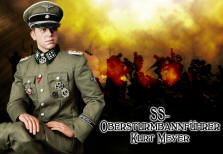
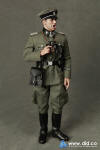
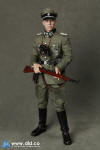
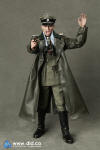
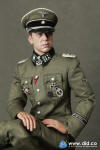
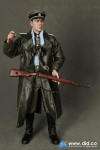
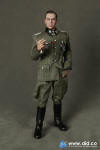
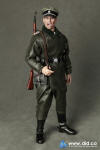 |
$149.95
|
|
Oberfeldwebel Steiner
DID80086


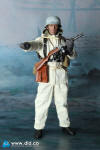
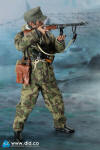
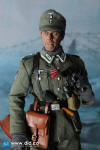

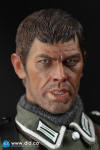 |
$199.95
|
|
SS Drummer Leon GM623
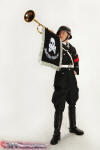
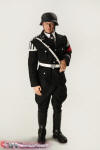
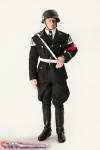
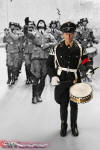


 |
$159.95
|
| John Coleman K80050
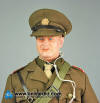











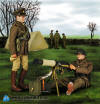 |
$99.95
|
| Heinz Guderian D80056
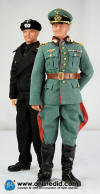







 |
$74.95
|
| Charles Winstone 29th Infantry
Division "Blue & Grey" A80038
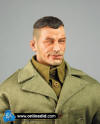














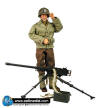
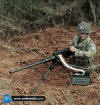
ITEM NO: A80038
The US 29th Infantry Division was a
United States infantry division that existed during World War I and
World War II.
Nicknamed "Blue and Gray",
the division's motto is "29 Let's Go," taken from General
Eisenhower's inspiring speech to the troops preparing for the
invasion of Normandy. The shoulder patch is a half-blue, half-gray
circlecontaining the nomad, or "yin-yang," Korean symbol
of eternal life; the symbol was approved 14 December 1917 and was
designed by Maj. James Ulio. The uniting of the blue and grey
symbolizes the fact that the division was composed of regiments from
Virginia and Maryland that had fought on both sides of the American
Civil War. It is currently part of the US Army National Guard.
In WWII, the 29th Division was formed
on 3 February 1941 and departed for the United Kingdom on 5 October
1942 where it continued training in Scotland and England from
October of 1942 up to June, 1944 in preparation for the invasion of
France.
Teamed with the US 1st Infantry
Division, the 116th Infantry Regiment of the 29th Division was in
the first assault wave to Teamed with the US 1st Infantry Division,
the 116th Infantry Regiment of the 29th Division was in the first
assault wave to face of intense enemy fire but soon secured the
bluff tops and went on to occupy Isigny on 9 June. The division cut
across the Elle River and advanced slowly toward St. Lo, fighting
bitterly in the Normandy bocage (hedge rows).
The 29th Infantry Division had spent
242 days in combat during campaigns in Normandy, Northern France,
the Rhineland and Central Europe, earning four Distinguished Unit
Citations in the process. Two soldiers of the division were awarded
the Congressional Medal of Honor. Also awarded were 44 DSCs, one
DSM, 854 Silver Stars, 17 Legion of Merit, 24 Soldier's Medal and
6,308 Bronze Stars.
The 29th Division returned to the
United States on January 4, 1946 and was demobilized a fortnight
later.
|
$84.95
|
| Jakob Blau DID D80065
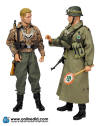   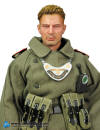 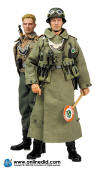 |
$99.95
|
| Russell Franklyn DID D80061
 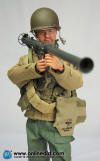 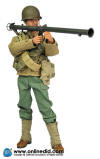 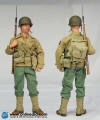    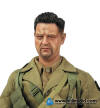 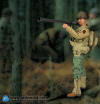 |
$99.95
|
| 82nd Airborne Division NAME:
"Edward Stiner" ITEM NO: A80054

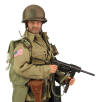
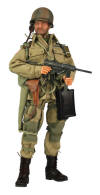
















The 82nd Airborne Division of the
United States Army was formed originally as the 82nd Infantry
Division on August 25, 1917, at Camp Gordon, Georgia. Since members
of the division came from all 48 states, the unit was given the
nickname "All-Americans," the basis for its famed "AA" shoulder
patch. Famous soldiers of the division include Sergeant Alvin C.
York and General James M. Gavin.
After the outbreak of World War II,
the 82nd was reactivated on March 25, 1942, at Camp Claiborne,
Louisiana, under the command of Major General Omar N. Bradley.
On August 15, 1942, the 82nd Infantry
Division became the first airborne division in the U.S. Army, and
was re-designated the 82nd Airborne Division. In April 1943,
paratroopers of the 82nd Airborne Division deployed to North Africa
under the command of Major General Matthew B. Ridgway to participate
in the campaign to invade Italy. The Division's first two combat
operations were parachute and glider assaults into Sicily on July 9
and Salerno on September 13, 1943. After that, the division also
joined the invasion of Normandy. On June 5, 1944 and June 6, 1944,
the paratroopers of the 82nd's three parachute infantry regiments
and reinforced glider infantry regiment boarded hundreds of
transport planes and gliders and began the largest airborne assault
in history.
The division returned to the United
States January 3, 1946. Instead of being demobilized, the 82nd made
its permanent home at Fort Bragg, North Carolina, and was designated
a regular Army division on November 15, 1948. The 82nd was not sent
to the Korean War, as both Presidents Truman and Eisenhower deemed
it necessary to keep the division as a strategic reserve in the
event of a Soviet ground attack anywhere in the world. |
$109.95
|
Afrikakorps The Desert Fox/Der
Wustenfuchs “Erwin Rommel” ITEM NO: D80049
 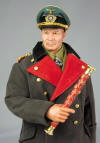 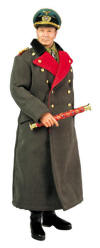 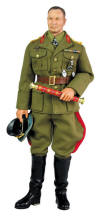 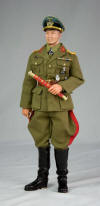     
Erwin Rommel was born in Heidenheim,
Germany, on 15th November, 1891. He joined the German Army in 1910.
By the outbreak of the First World War Rommel had reached the rank
of lieutenant. He fought on the Western Front and in January 1915
won the Iron Cross. In 1917 Rommel served on the Italian Front and
after leading the attack on Monte Matajur, was promoted to captain.
In October 1935 he was promoted to the rank of lieutenant colonel
and began teaching at the Potsdam War Academy.
An infantry tactics book of Rommel's
lectures was published in 1937 which was read by Adolf Hitler.
Hitler was greatly impressed by Rommel's ideas and arranged him to
command his HQ staff in Austria and Czechoslovakia. After that,
Rommel was given command of the 7th Panzer Division that invaded
France in May, 1940. Rommel's troops moved faster and farther than
any other army in military history.
As a result of his exploits in France
he was promoted to the rank of general. When Benito Mussolini asked
for help in North Africa Adolf Hitler sent Rommel to command the new
Deutsches Afrika Korps and successfully drove the British 8th Army
out of Libya. He moved into Egypt but was defeated at El Alamein.
With the USA Army landing in Morocco and Algeria, his troops were
forced to leave Tunisia.
In the autumn of 1944 Hitler
discovered that Rommel was plotting against him. On 14th October,
1944, Rommel was visited by two generals who had been sent by Hitler
with an ultimatum: suicide with a state funeral and protection for
his family and staff, or trial for high treason. Erwin Rommel took
poison and officially it was stated that he had died of a brain
seizure |
$99.95
|
s.SS-PANZER-ABTEILUNG 101
"Tim Becker"
ITEM NO: D80033


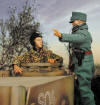
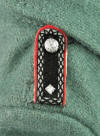














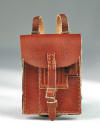






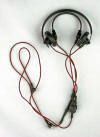
 |
$84.95
|
| This guy is loaded with
gear, I couldn't picture everything. The machine gun is completely
metal as is the tripod for it. There are multiple sets of hands in
different positions. One of the best figures I have seen.
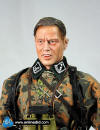 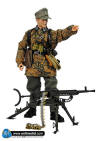     
      
SS-Freiwilligen-Gebirgs
Division “Prinz Eugen”
SS-Obersturmführer - Herbert Zeller ITEM NO:
D80041
The Division was formed in March 1942
by volunteers but this later changed when conscription was
introduced. The unit itself was formed by a SS Selbstschutz (SS
Protection Force) and the Einsatz-Staffel (ES) (Also called Prinz
Eugen) from Croatia and named SS-Freiwilligen-Division Prinz Eugen.
The Gebirgs Division was formed in
autumn 1942 when it gathered some 21,500 soldiers. Its weaponry was
mainly composed of captured equipment such as Czech machine guns and
French light tanks It was designated to the Balkans as an
anti-partisan mountain division – the fist such division in
Yugoslavia since 1941.
The first actions Prinz Eugen
participated near the Serbian-Montenegro border in the mountains
east of the Ibar River. Prinz Eugen advanced alongside the 1.
Gebirgs-Division, elements of the “Brandenburg” Regiment, 369. (Kroatische)
Infanterie-Division, 118. Jäger-Division and 104. The Division was
reorganized on 22 October 1943 and was renamed to 7. SS-Freiwilligen-Gebirgs-Division
Prinz Eugen. The next big offensive, in which Prinz Eugen
participated, was the assault on Drvar, codenamed Rosselsprung,
which began on 25 May 1944. The goals of this operation were to kill
or capture Tito on the Drvar island with the SS-Fallshirmjäger-Bataillon
500, the 1. Brandenburg Regiment of the Division Brandenberg and
other units with a massive support of the Luftwaffe.
On 21 September l944, it was at that
time that the division saw action in one of the most crucial
operations in the Balkans so far. Linking up with 13.
Waffen-Gebirgs-Division der SS Handschar (kroatische Nr. 1) the
remnants of the 23. Waffen-Gebirgs-Division der SS Kama (kroatische
Nr. 2) and 21. SS Waffen-Gebirgs-Division der SS Skanderbeg (albanische
Nr. 1), Prinz Eugen created the Vardar corridor in Macedonia
allowing the retreat north of 350,000 German soldiers from
occupation duties in the Aegean and Greek regions.
In the beginning of November the "SS
Skanderberg" Division was disbanded and its remnants incorporated
into the 14. Regiment of Prinz Eugen, which received its honour
title "Skanderbeg". The fighting around Nisch in October caused the
unit some heavy casualties and the 7th SS was sent for refreshing.
In January 1945 the Division once again fought the Red Army and and
Tito’s partisans around Otok and Vukovar. The retreat from Bosnia
continued and Prinz Eugen soon retreated to Croatia in April, where
it was to hold its positions south of Karlovac on 2 May 1945. On 10
May 1945 the Division retreated towards Celje in Slovenia where it
surrendered on 11 May 1945 to Yugoslav forces. |
$79.95
|
| SA Sturmabteilung
"Otto Bittman" ITEM NO: D80037

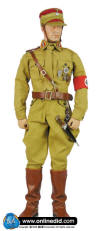





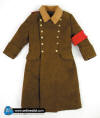
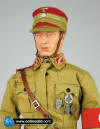
The history of the Sturmabteilung
(SA), often referred to as the "brown shirts", began when the
Rollkommando was formed on1920 to protect the meetings held by the
Deutsche Arbeiter Partei (DAP).
The SA was formally formed on 4th
Nov 1921 following a party meeting when a large number of opponents
attempted to disrupt it but was beaten and thrown out by the men of
the Turn- und Sportabteilung.
At the end of 1921 there was a
conflict between Röhm and Hitler, Röhm wanted to train the SA as an
army but Hitler wanted to use it solely for propaganda and
intimidating opponents.
Klintzsch left the command of the
SA 11 May 1923 to return to Brigade Ehrhardt and was replaced by
Hauptmann Hermann Göring. Göring reorganized the SA according to
military lines and divided it into standarten, sturmbannen and
hundertschaften. AVehrkehrsabteilung was formed in Munich of men
with access to or knowledge cars or motorcycles, this would later
evolve into the NSKK. An elite guard unit, the Stabswache, was also
formed, but it later merged with the Stosstrupp Hitler and later
evolved into the SS.
Hitler took the post as Oberster
SA-Führer personally on 2nd Sep 1930 and the leader of the SA was
now referred to as the Stabschef. Hitler recalled Röhm from Bolivia
and he was made Stabschef 5th Jan 1931.
In 1934 the Nacht der langen Messer
(night of the long knives) ended with Röhm and other SA leaders
carried out by the SS which would take the SA's place as the leading
Nazi organization |
$64.95
|
| George Puller DID
80034






USMC 1st Marine Regiment
|
$99.95
|
| Richard Schlemm DID
80028

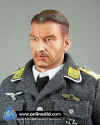


Luftwaffe Infantry
Division
|
$64.95
|
| Peter Greim DID
80032 DID
2006 Anniversary Figure Set








Grossdeutchland Division 16. Kompany
|
$79.95
|
|

